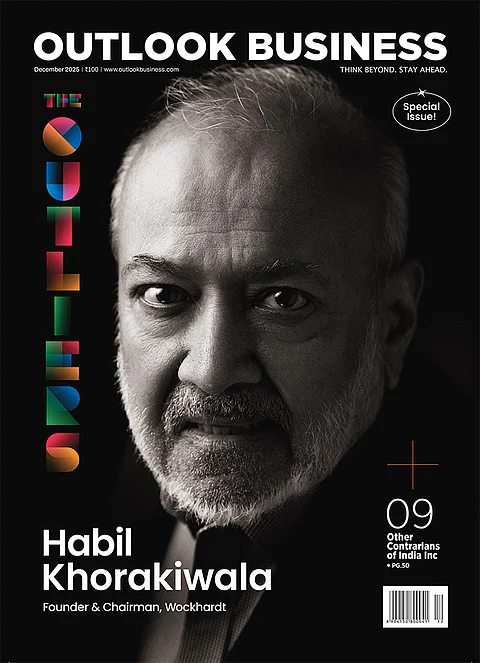
Strong growth trajectory: ~32% CAGR in revenue and rising margins
Profitability aided significantly by non-operational income
Core business likely still loss-making without investment gains
As eyewear giant Lenskart has hit the Indian stock market with one of the most anticipated IPOs this year, the hype around its valuation has raised eyebrows. While the IPO priced at the upper band of ₹402 per share, its public issue implies a price-to-earnings multiple of roughly 235-238 times of its FY25 profits, which placed it among the costliest consumer-tech listings in India.
“Lenskart is asking for ₹70,000 crore valuation, for a profit of ₹297 crore in FY25. That’s 234 times their earnings,” Abhishek Kumar, founder and chief investment advisor of Sahaj Money wrote in a post on LinkedIn. He also highlighted that the company’s profit story is actually hidden in “other income”, not its core business.
While the company has reported a profit of ₹297 crore in the previous fiscal year, Kumar says a large chunk of that - ₹356 crore- has come from non-operating income. In simple terms, if you exclude this additional income, the core business operations would show a loss of around ₹60 crore.
This suggests that the headline profit doesn’t fully reflect the strength of the core business just yet, and much of the bottom-line boost has come from sources outside day-to-day operations.
“I reverse-engineered the P/E ratio. That means at the current profit level, it would take almost 300 years to justify that valuation, that's essentially what the P/E ratio shows.The business as an operating entity is not generating profit. It is the investment income or other income that helped them show profit,” he told Outlook Business, while calling it “window-dressing” of valuation before launching the IPO.
He further stated that retail investors should either miss early gains or wait until the business starts generating real operating profit, if they are not able to evaluate opaque businesses. “If you don’t understand how a business makes money, don’t invest”.
The expert Outlook Business talked to recommend retail investors to be 'cautious’ for the Lenskart IPO, however, it's always wise/recommended to take advice of a certificate financial investment adviser before investing in any market instruments according to individual needs.
Citing an example of Amazon, Kumar says that the e-commerce giant was not profitable in the 90s, but its cash flow was positive and they reinvested heavily into growth. But at IPO stage, he asserts that nobody knew that Amazon would become what the company today is. Hence, he termed it “over-optimistic” to expect that Lenskart will suddenly turn profitable and give huge returns.
He also explained the valuation hype with a hypothetical situation. Suppose India’s population of roughly 150 crore includes about 10% who can afford eyewear, and only 10% of them actually shop at Lenskart, which is about 1 crore customers. If each spends around ₹1,500 a year, the company would generate ₹1,500 crore in revenue.
After accounting for costs, that might translate into ₹300 crore in profit. Apply a sector benchmark of around 30x P/E, and you arrive at a valuation of roughly ₹9,000 crore, he said, while clarifying that this is a rough calculation.
“But at present, Lenskart isn’t earning ₹300 crore from its core operations; its recent profit largely stemmed from selling investments and delaying payments. That’s why it’s hard to justify a valuation of ₹70,000–80,000 crore without long-term discounted-cash-flow assumptions,” he added.
Brokerage firms also remain divided on Lenskart valuation, with some agreeing that the company’s growth is exceptional and others still remain bullish. SBI Securities, in a recent note, stated that while the company’s financial performance and marker leadership are impressive, the valuation appears stretched.
“At the upper price band, it is valued at 10.1x EV/Sales and 68.7x EV/EBITDA, far higher than most retail peers. The brokerage believes listing gains are likely to be muted,” it said.
Nirmal Bang echoed similar sentiments for Lenskart IPO. “At FY25 P/E of 235x and EV/Ebidta of 68x, issue prima facie looks expensive. However, when we compare the company with other retailers like Metro and Trent, valuations seem fair,” it added.
“I have never bought any specs (I don't wear specs) ever but one thing is crystal clear from my lens: there is an organised campaign against LensKart. At ~10x Sales, it's a steal compared to P/ sales valuations of Paytm, Nykaa , Zomato, PB, Car Trade etc who IPOd at 25-50x their revenues ( with plenty losses too),” a social media user also wrote on X (formerly Twitter).
It is important to note that Lenskart doesn’t have true listed peers. It is one of the few new-age players in the organised eyewear space, and its business model is still maturing. The company that has only recently turned profitable, and comparing it with an established player like Titan isn’t like-for-like. Both are at very different stages of scale, profitability, and market maturity, making traditional P/E-based comparisons less straightforward.
Lenskart has posted impressive growth over the past few years. In FY25, the company reported revenue of ₹6,652 crore, reflecting a 32.5% CAGR from FY23 to FY25. Its EBITDA margin also strengthened significantly, rising from 6.9% to 14.7% over the same period.
The bottom line also showed a turnaround, from a loss of ₹64 crore in FY23 to a profit of ₹296 crore in FY25. However, part of this jump in profitability stems from accounting adjustments related to the Owndays acquisition. Stripping those out, the underlying profit stands closer to ₹130 crore.


































